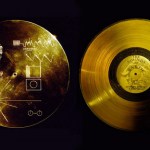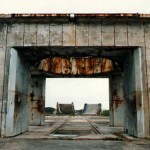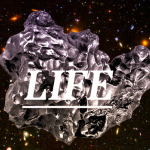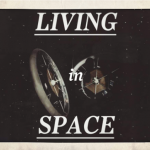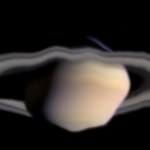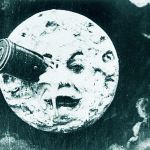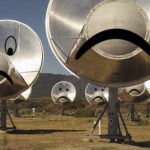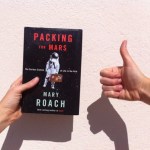space
In 1977, NASA sent a pair of unmanned probes named Voyager 1 and Voyager 2 into space. Among the infrared spectrometers and radio receivers included on each probe were identical copies of the same non-scientific object: the Voyager Golden Record.
Sheathed in a protective aluminum jacket, the Record is a 12-inch gold-plated copper disk containing sounds and images chosen to portray the diversity of life on Earth: bird calls, whale songs, the sounds of surf, wind, and thunder, music from human cultures, and some 55 greetings in a range of languages, alive and dead. Like lonely time capsules,…
The recent launch of the Curiosity Mars rover has quietly broken the record for oldest human-made object in space, and instantly pulled numismatics, the study of coinage, into the Space Age.
Prior to the launch, the oldest human-made object in space was the Vanguard 1 satellite, which was launched in 1958 and operated until 1964. Now it is a coin!
American geologists have long used copper Lincoln pennies as scale indicators in photographs. All the Mars rover missions are geology projects conducted at a distance. And so, as a homage to professional geology tradition, a 1909 one-cent coin is…
Popular Science, one of the leading sources of news in technology, science, gadgets, space, green tech and more, is returning as a key Media Partner with the Festival!
In doing so, PopSci joins a growing list of other top science media leaders who will be serving as Festival sponsors, including Popular Mechanics, Scientific American, MIT's Technology Review, Chemical & Engineering News, School Tube.com, ENGINEERING.com, EE Times and PBS Kids.
PopSci has been a major source of science and technology news since its award-winning magazine Popular Science was founded back in 1872. Its online…
Dear Reader, remember the remote-controlled Mars rovers, Spirit and Opportunity? How long is it since the last time you thought of them? Opportunity landed on Mars eight Earth calendar years ago today, and it still works fine! Its mate Spirit was mobile on the Red Planet for over five years and then functioned as a stationary science platform for another year before getting killed off by a Martian winter it couldn't avoid. Amazing engineering that keeps working year after year without a technician so much as touching it.
Oppy is now at Endeavour crater and will spend the Martian winter in a…
If you have followed energy issues from anywhere other than a cave on a mountain peak, you've probably heard technoutopians utter some variation on the following sentence two or three hundred times "We walked on the moon - of course we can do whatever it takes to shift from fossil fuels to some other source of energy." The moon shot is perceived as the ultimate example of "put in a quarter and get out the technological outcome you want" in our history. If we could set out to put a man on the moon and do it in less than decade, can't we do anything we want to, with just enough ingenuity?…
The Curiosity rover, a science robot the size of a car, is on its way to Mars where it will use a new landing system and hopefully spend several fruitful years trundling about. One of the coolest instruments on it is a laser gun coupled with a spectrometer: Curiosity can zap a rock from a distance and determine its chemical composition by looking at the colours of the light emitted by the heated material. I'm going to watch this mission closely.
On the rover is the above sundial cum camera calibration target, designed by Jon Lomberg (who already has three pieces of art on Mars). Note the…
A couple of months ago, I wrote a piece here on Universe exploring the ideas of the futurist Gerard K. O'Neill, who designed far-out but ultimately quite pragmatic environments for human habitation in space in the mid-1970s. In that article, I touched briefly on the notion of the "Overview Effect," a phrase coined by the writer Frank White to describe the profound insight -- characterized by a sudden awareness of life's interconnectedness and the frailty of our planet -- experienced by astronauts gazing down at the Earth from space.
Frank White is the author of The Overview Effect: Space…
A group of 'astronauts' and a mechanical rover have set sail through the stars across North America to an impact crater near Mistastin Lake in the wilderness of Canada, travelling by helicopter rather than rocket ship, in what is known as an "analogue mission":
Beginning today (August 29), a team of scientists and engineers led by Dr. Gordon Osinski from The University of Western Ontario will travel to an impact crater at Kamestastin Lake, Labrador, where they will run analogue human and robotic sample return mission scenarios. An "astronaut" team will conduct a series of investigations in…
The Book of Exogenesis: In the beginning was the word, and the word was a meteorite...
Earlier this month, a report, based on NASA studies of meteorites found on Earth, suggested that some building blocks of DNA may have been formed in space.
As it turns out, DNA components have been found on meteorites before, but it's never been entirely clear if the space rocks came to Earth bearing these molecules, or if they were contaminated upon arrival. Furthermore, this recent study of meteorites was the first to discover trace amounts of three molecules -- purine, 2,6-diaminopurine, and 6,8-…
As you have undoubtedly heard from sources more overtly journalistic than this one, SETI is back online!
After federal and state financial cutbacks forced the institute's shiny new Allen Telescope Array (ATA) into indefinite hibernation earlier this year, cosmically-minded geeks all over the globe donated money in droves, bringing the search for extraterrestrial life back from oblivion. Over $200,000 in donations from thousands of fans -- including Contact's own Jodie Foster, science-fiction writer Larry Niven, and Apollo 8 Astronaut Bill Anders -- will get science operations up and running…
In the mid-1970s, the U.S. State Department prohibited the internal use of the term "space colony," due to the global bad reputation of colonialism. Instead, the government opted for "space settlement." Of course, as Stewart Brand pointed out at the time, the last thing you do in space is settle. Quite the opposite! Making the decision to explore space -- and live there -- is just about the most unsettled act a human can commit.
There have always been two camps on this issue. First, the unsettled, like Brand: the science-fiction aficionados, capitalists, rocketry geeks, macrocosmic thinkers,…
Following on from last week's discovery of water that can freeze at room temperature, here's another trick. Water at minus 130 degrees Celsius can flow like a thick fluid. The work carried out by Ove Andersson, a physicist at Umeå University, showed that by increasing pressure to 10,000 times the norm, ice could be coaxed into a viscous liquid state 30% denser than normal water. The findings lend support to the theory that water has two liquid phases, one at much higher density than the other. I'd imagine it also means liquid water is likely to exist even on frozen planets.
As someone…
"All things move and nothing remains still" -- Heraclitus
The history of astronomy can be read as a story of better and better vision. Over the centuries, we have supplemented our vision with technology that allows us to see further and more clearly; while Ancient astronomers, who relied only on their naked eyes to perceive the universe, managed to make star catalogues and predict comets, Galileo, pressing his to a telescope, saw all the way to the moons of Jupiter.
Optical telescopes and the human eye are fundamentally limited; early astronomers were forced to gaze into telescopes for…
The moon is a rock.
But it's also Selene, Artemis, Diana, Isis, the lunar deities; an eldritch clock by which we measure our growth and fertility; home of an old man in the West and a rabbit in the East; the site of countless imaginary voyages; a long-believed trigger of lunacy (luna...see?). It's another world, close enough to our to peer down at us; to it, we compose sonatas. It can be blue, made of cheese, a harvest moon; we've long fantasized about its dark side, perhaps dotted with black monoliths or inhabited by flying men.
The moon is a totem of great importance in all religions…
As you may have heard, SETI is in trouble.
Funding cutbacks on a state and federal level have forced the Allen Telescope Array -- SETI's new homebase, actually just a part of the U.C. Berkeley's Hat Creek Radio Observatory (HCRO) -- into indefinite hibernation. With U.C. Berkeley losing ninety percent of its NSF University Radio Observatory money this year, and the growing California budget shortfalls, the hunt for extraterrestrial life has simply, and pragmatically, fallen by the wayside.
This financial deficit particularly smarts because the Allen Telescope Array was just about to…
This is the first in a series of posts about art, the moon, and art on the moon. You would think this would be a fairly limited subject, but...
Art on the moon has been happening for a long time.
In 1969, a coterie of American contemporary artists devised a plan to put an art museum on the Moon. When NASA's official channels proved too dauntingly bureaucratic, Andy Warhol, Robert Rauschenberg, David Novros, Forrest "Frosty" Myers, Claes Oldenburg, and John Chamberlain weren't deterred. Instead, they managed to sneak their "museum" -- in reality a minuscule enamel wafer inscribed with six…
Recently my mind has been blown twice. First by listening to the first four songs on Funkadelic's acid-drenched 1970 album Free Your Mind And Your Ass Will Follow. Then by studying the above picture.
It's comet Tempel 1. Up close in interplanetary space. And it's been visited twice by different space probes: first Deep Impact imaged the comet on its way towards the sun in 2005 and shot an impactor point blank at it. Then the Stardust probe, originally designed and launched to meet with another comet, was sent to meet Tempel 1 on its way out again from the sun. Today Stardust imaged the comet…
Dear Reader, remember the remote-controlled Mars rovers, Spirit and Opportunity? How long is it since the last time you thought of them? Spirit landed on Mars seven Earth calendar years ago today, Opportunity on 25 January -- and at least Oppy still works fine! Spirit has sadly been stuck on the edge of a small dust-filled crater since May 2009, one set of wheels inside and one outside the crater. It is currently incommunicado because of the Martian winter, being in a poor position for solar power. But it still probably works. And Oppy trundles on toward Endeavour crater. Currently it's…
We live in an age where truth is, if not stranger than fiction, then at least equally strange. Sometimes pop-science books illustrate this point with particular well-researched glee and Packing for Mars: The Curious Science of Life in the Void is such a book.
Where do I begin? It's a true nerd's smorgasbord. It answers all the scatological and emotional questions that kids always imprudently ask astronauts. It acknowledges the humanness of space travel as a venture: that astronauts are people who must eat, pass gas, have sex, take up space, sweat, sleep, fear, and otherwise learn to be…
Update 13 December: Florian at Astrodictum Simplex has translated the whole entry into German. Thank you, Florian!
Update 21 December: German pop-sci web zine Scinexx reports on the poor status of the impact hypothesis and refers to this blog entry. They also mention a really weird idea of the CIRT's that I hadn't heard about: that the impact event somehow taught certain Celts to make better steel, and that this material eventually allowed the Roman empire to expand!
Back in August, I blogged about this dodgy paper that had been published in Antiquity. Subsequently, German geologists Robert…
